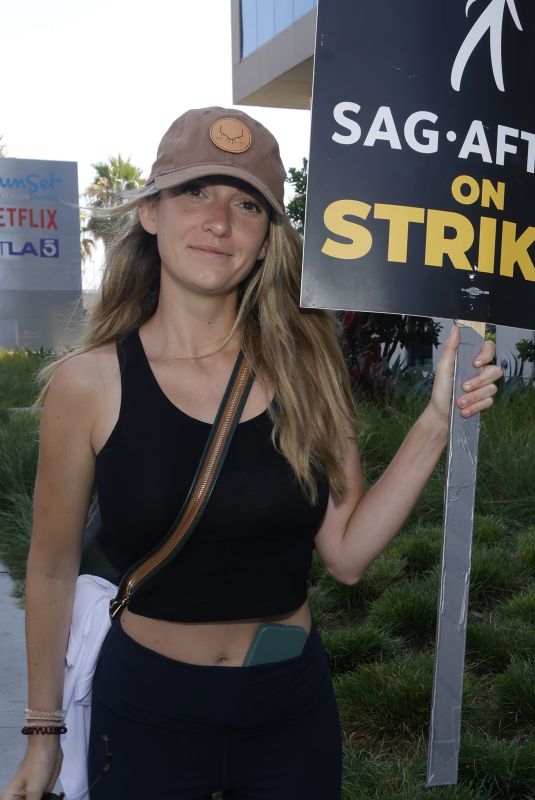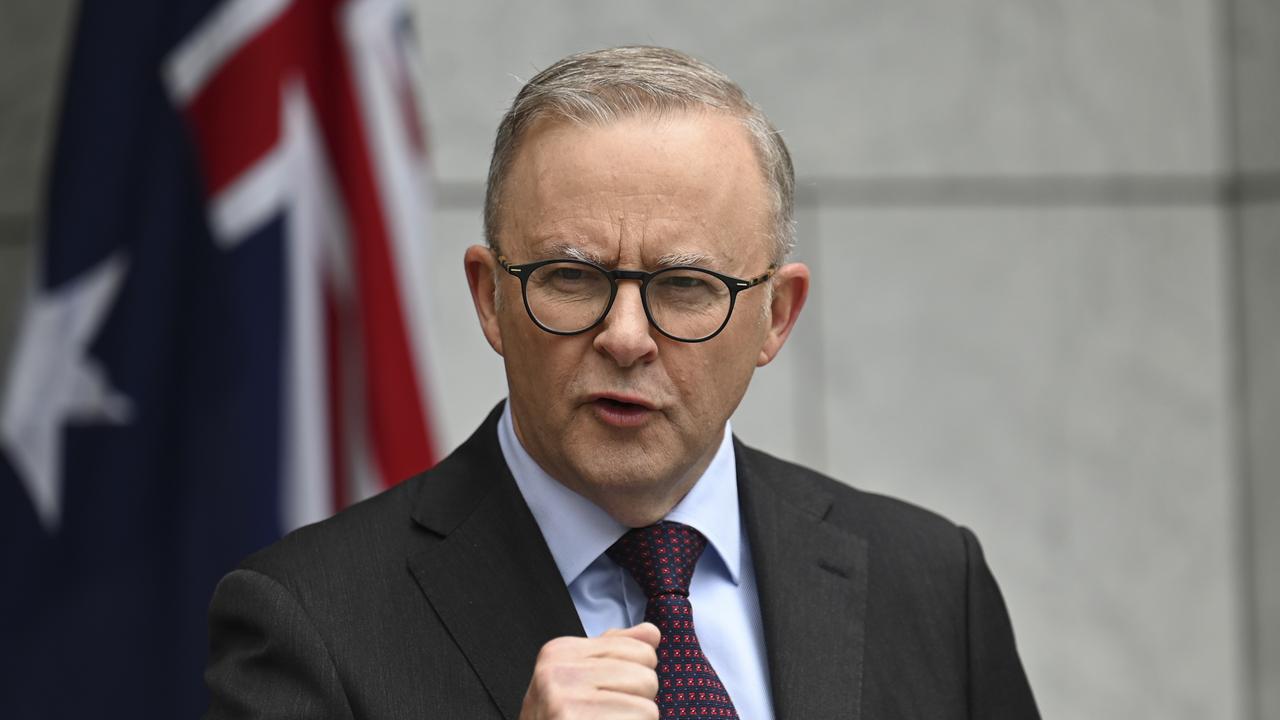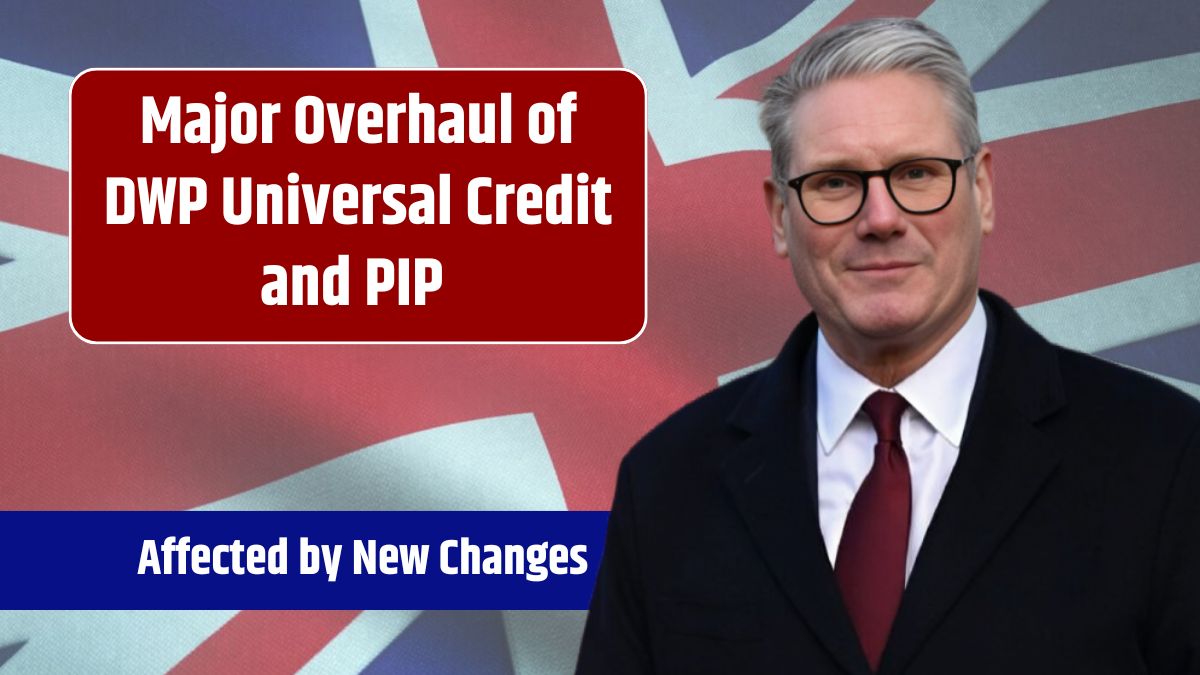SAG-AFTRA Joins WGA On Picket Line: What This Means For Hollywood

Table of Contents
The SAG-AFTRA Strike: Key Demands and Issues
The SAG-AFTRA strike is fueled by several critical issues impacting actors' livelihoods and working conditions. The union's demands reflect the seismic shifts in the entertainment industry, particularly the rise of streaming services and the growing use of artificial intelligence (AI).
Fair Wages and Residuals in the Streaming Era
Actors are facing significant challenges with declining residuals in the streaming landscape. Traditional television models offered residuals based on re-runs and syndication, providing a crucial source of income for actors. Streaming services, however, often operate on different models, leading to significantly reduced or even nonexistent residuals for many actors, even for hugely popular shows.
SAG-AFTRA is demanding a fairer share of streaming profits, arguing that actors should be compensated proportionally to the success of their projects on these platforms. The union believes that the current system is unsustainable and unfairly benefits streaming giants like Netflix, Disney+, and Hulu at the expense of the actors who create their content.
- Specific examples of how streaming has negatively impacted actor compensation: Many actors report receiving only a single payment for their work on streaming projects, regardless of viewership or the show's longevity. Popular shows with millions of viewers may not generate substantial additional income for the actors.
- Streaming services affected: Netflix, Disney+, Hulu, Amazon Prime Video, HBO Max are all significantly impacted by the strike as they rely heavily on actors and writers for content creation.
Artificial Intelligence (AI) and its Impact on Actors' Work
SAG-AFTRA has voiced serious concerns regarding the use of AI in replacing actors and utilizing their likenesses without consent. The union fears that AI technologies could be used to create digital replicas of actors, potentially diminishing the value of their work and undermining their job security.
The union is demanding regulations and protections against AI exploitation, including safeguards to prevent the unauthorized use of actors' likenesses and performance data for AI training purposes. They are pushing for transparency and fair compensation when AI is used in connection with actors' performances.
- Examples of how AI could be used to replace actors: Deepfake technology can create realistic digital replicas of actors, allowing studios to potentially use them in future projects without paying actors’ fees. AI could also be used to generate synthetic voices and performances, further reducing the need for human actors.
- Specific AI technologies of concern: Deepfake technology, AI voice cloning, and AI-generated performance models are all areas of concern for SAG-AFTRA.
Working Conditions and Safety on Set
The SAG-AFTRA strike also addresses concerns about long working hours, inadequate rest periods, and safety issues on set. Actors often face grueling schedules and unsafe working conditions, especially on low-budget productions.
SAG-AFTRA demands improved working conditions and safety protocols, including mandated rest periods, safer working environments, and better protections against exploitation. They are advocating for increased transparency and accountability regarding working conditions across all productions.
- Examples of unsafe working conditions: Long hours without sufficient breaks, working in hazardous environments without adequate safety measures, and lack of access to essential healthcare services on set are among the concerns.
- Instances of exploitation: Actors frequently encounter situations where they are required to work beyond contracted hours without proper compensation or rest.
The Combined Impact of the WGA and SAG-AFTRA Strikes
The simultaneous strikes by the WGA and SAG-AFTRA have created a near-total shutdown of Hollywood production. This unprecedented situation has far-reaching consequences across the entertainment industry.
Production Shutdowns and Delays
The dual strikes have brought film and television production to a near standstill. Numerous projects are on hold, causing significant delays and uncertainty for studios and production companies.
- Major studios and production companies affected: Disney, Warner Bros. Discovery, Netflix, Amazon Studios, Paramount, and many others have been impacted.
- Examples of delayed projects: Many major film and television projects, including sequels, new series, and late-stage productions, have been indefinitely delayed due to the strike.
Economic Consequences for the Entertainment Industry
The economic impact of the strike extends far beyond actors and writers. Numerous other industry professionals, including support staff, caterers, location managers, and other crew members, are experiencing job losses or reduced work due to the production halt. The ripple effects of the strike are being felt throughout the industry's ecosystem.
- Impacts on support staff: Grips, gaffers, sound technicians, and other crew members face unemployment or significant reductions in work hours.
- Impacts on other sectors: Catering companies, location services, and other businesses that support film and television productions are experiencing significant revenue losses.
The Potential for Long-Term Change in Hollywood
The strikes have the potential to bring about significant long-term changes in the industry's labor practices. The outcome of the negotiations could reshape how actors and writers are compensated, how AI is utilized, and how working conditions are regulated within the industry.
- Potential improvements in compensation: A successful negotiation could result in fairer residuals for streaming projects and improved minimum wages for actors.
- Improvements in working conditions: The strikes could lead to stricter regulations regarding working hours, rest periods, and safety on set.
- AI regulations: The outcome could establish industry-wide standards for the use of AI in film and television production, protecting actors' rights and preventing exploitation.
Potential Resolutions and the Road Ahead
Reaching a resolution to the strikes requires complex negotiations between the unions and the Alliance of Motion Picture and Television Producers (AMPTP).
Negotiation Strategies and Challenges
Both SAG-AFTRA and the WGA are employing various negotiation strategies, including public pressure campaigns and showcasing the severity of the issues at stake. However, there are significant challenges, including the differing views on compensation models, AI regulations, and other key issues.
- Key sticking points in negotiations: Residuals for streaming projects, AI usage rights, and improvements to working conditions remain major points of contention.
- Potential compromises: The negotiations may involve compromises on all sides, potentially including a combination of improved compensation models, stricter AI regulations, and enhancements to working conditions.
Public Support and the Future of the Strikes
The strikes have garnered significant public support, with many recognizing the importance of fair compensation and safe working conditions for actors and writers. This public support could exert pressure on studios to reach a resolution and prevent a prolonged shutdown. The length of the strikes and the long-term implications remain to be seen, but the outcome will be pivotal in shaping the future of the industry.
- Examples of public support: Celebrity endorsements, social media campaigns, and public demonstrations have shown widespread support for the striking unions.
- Opinions from industry experts: Many industry experts predict a protracted negotiation, emphasizing the significant challenges of resolving the complex issues at stake.
Conclusion
The simultaneous SAG-AFTRA and WGA strikes represent a crucial turning point for Hollywood, demanding a reckoning with the evolving entertainment landscape. The core issues—fair compensation, the impact of AI, and improved working conditions—are paramount to the future of creative labor. The outcome of these strikes will undoubtedly shape the industry for years to come. Staying informed about the progress of the SAG-AFTRA strike and the WGA strike is vital for anyone involved in or interested in the future of Hollywood. Actively follow the news and participate in relevant discussions to fully grasp the complexities of this momentous labor action. A comprehensive understanding of the Hollywood strike’s impact is essential to navigate these critical times.

Featured Posts
-
 Nba Playoffs Heat Vs Cavaliers Game 1 Predictions Best Bets And Analysis
May 07, 2025
Nba Playoffs Heat Vs Cavaliers Game 1 Predictions Best Bets And Analysis
May 07, 2025 -
 Cem Karaca Bati Ve Anadolu Mueziginin Essiz Bulusmasi
May 07, 2025
Cem Karaca Bati Ve Anadolu Mueziginin Essiz Bulusmasi
May 07, 2025 -
 Wnba Preseason Notre Dame Stars Face Off In South Bend
May 07, 2025
Wnba Preseason Notre Dame Stars Face Off In South Bend
May 07, 2025 -
 Ayesha Currys Marriage To Steph Curry Family Dynamics And Priorities
May 07, 2025
Ayesha Currys Marriage To Steph Curry Family Dynamics And Priorities
May 07, 2025 -
 Papezev Blagoslov Francisek Pozdravi Mnozico Na Trgu Sv Petra
May 07, 2025
Papezev Blagoslov Francisek Pozdravi Mnozico Na Trgu Sv Petra
May 07, 2025
Latest Posts
-
 Dwp Benefit Stoppage Four Word Letters Warning Uk Households
May 08, 2025
Dwp Benefit Stoppage Four Word Letters Warning Uk Households
May 08, 2025 -
 Warning Universal Credit Overhaul Could Leave You Worse Off
May 08, 2025
Warning Universal Credit Overhaul Could Leave You Worse Off
May 08, 2025 -
 Dwp Scrapping Two Benefits What You Need To Know
May 08, 2025
Dwp Scrapping Two Benefits What You Need To Know
May 08, 2025 -
 Universal Credit Key Changes And Their Impact On Claimants
May 08, 2025
Universal Credit Key Changes And Their Impact On Claimants
May 08, 2025 -
 Dwp Overhaul Potential Loss Of Universal Credit Benefits
May 08, 2025
Dwp Overhaul Potential Loss Of Universal Credit Benefits
May 08, 2025
